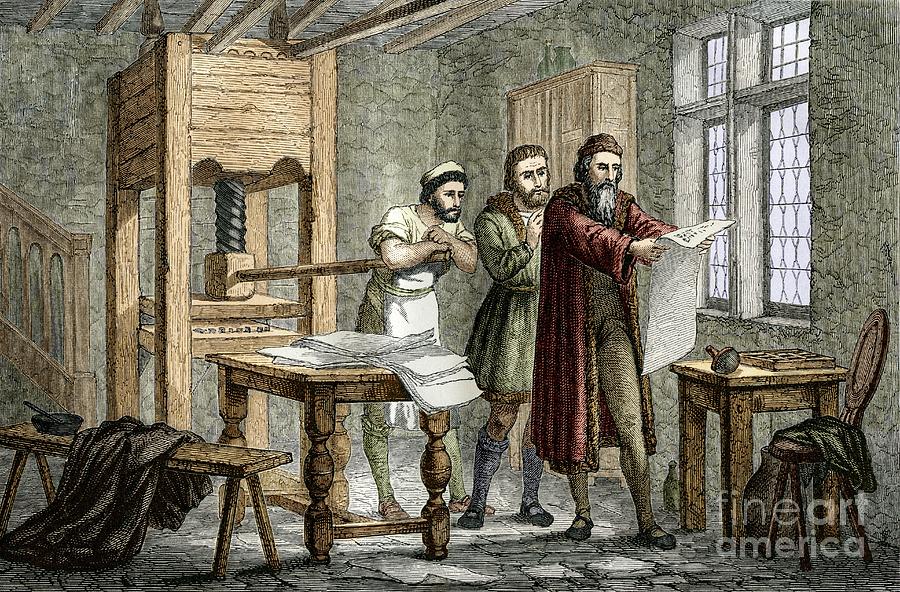BIBLICAL ORAL TRADITION
How long the Biblical oral tradition lasted until the Gutenberg press?
The biblical oral tradition lasted for about 1,500 years until the invention of the Gutenberg press.
The biblical oral tradition lasted for centuries before the invention of the Gutenberg press. The earliest parts of the Bible were likely passed down orally for hundreds of years before they were written down. The first written copies of the Bible date back to the 3rd century BC, but the oral tradition continued to be an important way of transmitting the Bible until the invention of the printing press in the 15th century.The Gutenberg press made it possible to mass-produce books, which led to a dramatic increase in the availability of the Bible. This had a profound impact on the way the Bible was read and understood. Before the printing press, the Bible was often read aloud in public, but the printing press made it possible for people to read the Bible privately. This led to a more individual and reflective approach to reading the Bible.The printing press also made it possible to translate the Bible into many different languages, which made it accessible to a wider audience. This had a significant impact on the spread of Christianity and the development of Western culture.

++++
Reliability Of Oral Tradition
src="https://www.discerninghearts.com/catholic-podcasts/?powerpress_embed=14707-podcast&powerpress_player=mediaelement-audio" title="Blubrry Podcast Player" frameborder="0" scrolling="no"></iframe>

In the modern world, oral means of communication are deemed inherently unreliable as we’ve all heard of the game of telephone where a phrase is whispered around a circle and it comes out nothing like the original.But scholars have shown that in the ancient world, and to this day in some places, oral traditions were memorized and passed down to multiple generations without alteration.1
When the apostles went out to teach the Faith, they did not whisper it in secret, but proclaimed it publicly to the multitudes. Oral tradition was the normative means of passing on the faith, as St. Paul’s says in 2 Timothy 2:2, “what you have heard from me before many witnesses entrust to faithful men who will be able to teach others also.”There is no evidence that a widespread change in belief took place among the early Christians. Quite the opposite, at the end of the second century St. Irenaeus wrote that while the Church had spread over the entire known world, the Faith had been maintained in tact everywhere,2 something only attributable to the Holy Spirit.
1 – e.g., . Kenneth Bailey, “Informal, Controlled, Oral Tradition and the Synoptic Gospels” Asia Journal of Theology, 5.1(1991)
2 – Against Heresies 1:10:2 [ca. A.D. 180]
How Orally the Bible was Presented
Listeners received the biblical oral tradition in a variety of ways. In many cases, they would hear the stories being told by a community elder or religious leader. The stories would often be accompanied by music, dance, and other forms of art. This made the stories more memorable and engaging for the listeners.The listeners would also participate in the telling of the stories. They would often ask questions, offer their own interpretations, and add their own stories to the mix. This helped to create a sense of community around the stories and to ensure that they were passed down accurately.The oral tradition was also a way for listeners to connect with their ancestors and with the divine. The stories often told of the creation of the world, the history of the people, and the relationship between God and humanity. By listening to these stories, listeners could gain a sense of their place in the world and their purpose in life.The oral tradition was a vital part of the transmission of the Bible for centuries. It helped to ensure that the stories were preserved and that they remained relevant to the people who heard them. The invention of the printing press did not completely replace the oral tradition, but it did make it possible for the Bible to be read by a wider audience.Here are some additional details about how listeners received the biblical oral tradition:
- The stories were often told in a repetitive and rhythmic way, which helped listeners to remember them.
- The stories were often accompanied by gestures and facial expressions, which helped to bring them to life.
- The stories were often told in a way that allowed listeners to participate. They might be asked to answer questions, offer their own interpretations, or even add their own stories to the mix.
- The stories were often told in a way that was relevant to the listeners' own lives. This helped them to connect with the stories and to see their own experiences reflected in them.
The oral tradition was a powerful way to transmit the Bible and to connect people with its message. It is a tradition that continues to this day, as people continue to tell and retell the stories of the Bible in their own words.